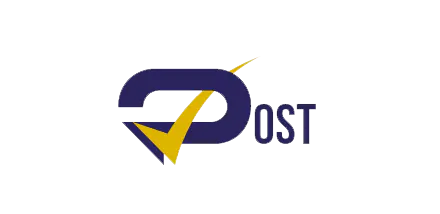اتصل بالدعم
عنوان البريد الإلكتروني
مشروع واعد يحتاج لتمويل Water Pipeline
البحث عن مستثمر
10,000,000,000 ر.س
قطاع المقاولات و البناء
Description
May the peace, blessings, and mercy of God be upon you
مشروع واعد يحتاج لتمويل Water Pipeline
Project Name: Port Sudan-Saudi Arabia Water Pipeline
Main objective: To solve and address the water problem facing the Port Sudan region, the sisterly Kingdom of Saudi Arabia, and neighboring regions.
Target countries: Port Sudan, Saudi Arabia
Objectives: The project aims to solve the fresh water crisis facing the city of Port Sudan and the Kingdom of Saudi Arabia, which are facing problems with fresh water.
The project’s impact on communities will be significantly significant, particularly in terms of reducing the cost of purifying and treating salty seawater, especially in the Kingdom of Saudi Arabia.
Port Sudan city suffers from high water salinity
The project will greatly contribute to the safety and physical health of the people due to the danger of water and chemicals used in the purification process.
It also helps solve the Grand Ethiopian Renaissance Dam water crisis, as a cooperation agreement is being concluded between Egypt, Sudan and Ethiopia in cooperation with Saudi Arabia. In the agreement, water will be pumped to Sudan and from there to Egypt, and part of it will be drawn through pipelines to the city of Port Sudan and then through pipelines inside the Red Sea to Saudi Arabia.
Part of the money generated from this project goes to the state budget, and the rest goes to establishing new development projects in some desert areas that will be connected by fresh Nile water.
The project will also contribute to the development of civil society in the eastern Sudan region, from which the mining sector will improve and flourish.
Challenges*
1. High financial cost.
2. Geographical and environmental challenges.
3. The need for advanced technology.
4. Ensuring security and stability.
5. International cooperation.
*Financial Options*
1. Government funding.
2. Private investment.
3. International loans.
4. Partnerships with international water companies.
Additional project objectives
1. Strengthening trilateral regional cooperation.
2. Supporting sustainable development.
3. Improving food security.
4. Promoting trade exchange.
Additional project phases
1. Study of environmental impacts.
2. Logistics planning.
3. Establishing service and maintenance centers.
4. Training of technicians and operators.
Additional benefits
1. Improving the quality of life.
2. Increase productivity.
3. Support tourism.
4. Enhancing political stability.
Additional challenges
1. Political and diplomatic challenges.
2. The need to secure the pipeline.
3. Dealing with natural disasters.
4. Maintain water quality.
Additional financial options
1. Funding from international organizations.
2. Local private investment.
3. Partnerships with the private sector.
4. Islamic finance.
Additional technology
1. Remote monitoring systems.
2. Solar energy technology.
3. New water desalination systems.
4. Water conservation technology.
Additional potential partners
1. International organizations (such as the United Nations).
2. Technology companies (such as: Intel, Siemens).
3. Regional banks (such as the African Development Bank).
4. Research institutions.
Next steps
1. Conduct comprehensive feasibility studies.
2. Signing bilateral cooperation agreements.
3. Forming a steering committee.
4. Determine budget and funding.
5. Start engineering works.
Would you like to:
1. Detailed feasibility study?
2. Financial cost analysis?
3. Information about the technology used?
4. Potential partnerships?
5. Study the effects of the environment?
Port Sudan-Saudi Arabia Water Pipeline Project
*Project objectives*
1. Providing clean drinking water to the population.
2. Supporting economic and industrial development.
3. Strengthening cooperation between Sudan and Saudi Arabia.
4. Improving public health and the environment.
Project stages
1. Feasibility study and design.
2. Construction of a water desalination plant in Port Sudan.
3. Establishing a water pipeline of approximately 1,500 km in length.
4. Construction of water pumping stations.
5. Connecting the line to the Saudi water system.
Advantages
1. Providing 500 million cubic meters of water annually.
2. Create job opportunities.
3. Improving living standards.
4. Support agriculture and industry.
5. Enhancing water security.
Challenges
1. High financial cost.
2. Geographical and environmental challenges.
3. The need for advanced technology.
4. Ensuring security and stability.
5. International cooperation.
Financial options
1. Government funding.
2. Private investment.
3. International loans.
4. Partnerships with international water companies.
Technology
1. Water desalination.
2. Pumping and control systems.
3. Quality control systems.
4. Renewable energy technology.
Potential partners
1. The Sudanese government.
2. The Saudi government.
3. Global water companies.
4. International banks.
Next steps
1. Conduct feasibility studies.
2. Signing cooperation agreements.
3. Determine budget and financing.
4. Start engineering works.
English translation:
Port Sudan-Saudi Arabia Water Pipeline Project
*Objectives*
1. Provide clean drinking water for residents.
2. Support economic and industrial development.
3. Enhance Sudan-Saudi cooperation.
4. Improve public health and environment.
Project Phases
1. Feasibility study and design.
2. Construct desalination plant in Port Sudan.
3. Build 1,500 km pipeline.
4. Establish pumping stations.
5. Connect to Saudi water network.
Benefits
1. Supply 500 million cubic meters of water annually.
2. Create jobs.
3. Improve living standards.
4. Support agriculture and industry.
5. Enhance water security.
Challenges
1. High financial costs.
2. Geographical and environmental challenges.
3. Advanced technology requirements.
4. Security and stability.
5. International cooperation.
Financing Options
1. Government funding.
2. Private investment.
3. International loans.
4. Partnerships with global water companies.
Technology
1. Desalination.
2. Pumping and control systems.
3. Quality monitoring systems.
4. Renewable energy.
Potential Partners
1. Sudanese Government.
2. Saudi Government.
3. Global water companies.
4. International banks.
Next Steps
1. Conduct feasibility studies.
2. Sign cooperation agreements.
3. Determine budget and funding.
4. Commence engineering works.
Additional project objectives
1. Strengthening trilateral regional cooperation.
2. Supporting sustainable development.
3. Improving food security.
4. Promoting trade exchange.
Additional project phases
1. Study of environmental impacts.
2. Logistics planning.
3. Establishing service and maintenance centers.
4. Training of technicians and operators.
Additional benefits
1. Improving the quality of life.
2. Increase productivity.
3. Support tourism.
4. Enhancing political stability.
Additional challenges
1. Political and diplomatic challenges.
2. The need to secure the pipeline.
3. Dealing with natural disasters.
4. Maintain water quality.
Additional financial options
1. Funding from international organizations.
2. Local private investment.
3. Partnerships with the private sector.
4. Islamic finance.
Additional technology
1. Remote monitoring systems.
2. Solar energy technology.
3. New water desalination systems.
4. Water conservation technology.
Additional potential partners
1. International organizations (such as the United Nations).
2. Technology companies (such as: Intel, Siemens).
3. Regional banks (such as the African Development Bank).
4. Research institutions.
Next steps
1. Conduct comprehensive feasibility studies.
2. Signing bilateral cooperation agreements.
3. Forming a steering committee.
4. Determine budget and funding.
5. Start engineering works.
Would you like to:
1. Detailed feasibility study?
2. Financial cost analysis?
3. Information about the technology used?
4. Potential partnerships?
5. Study the effects of the environment?
Show quoted text
شارك المشروع على:
اضافة الى المفضلة
أضف للمقارنة
بلغ
بلغ
لقد تم إرسال تقريرك إلى المسؤول.
Featured listings

فرصة استثمارية في الطاقة الشمسية
1,000,000 ر.س

فرصة استثمارية في شركة تقنية
6,000,000 ر.س
{{ props.swiper.activeIndex + 1 }} / 5
ربما يعجبك أيضا...
روابط مفيدة
احدث الإعلانات

شريك في مشروع زراعي
150,000,000 ر.س

فرصة مشروع شبابي
50,000 ر.س

مطلوب وكيل معتمد في السعودية ودول الخليج
460,000 ر.س
جميع الحقوق محفوظة لمنصة بوست © 2024



























